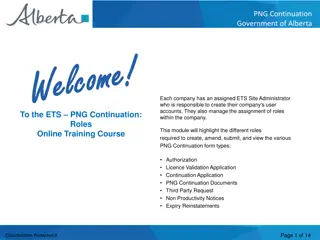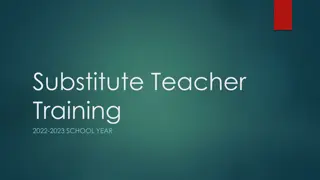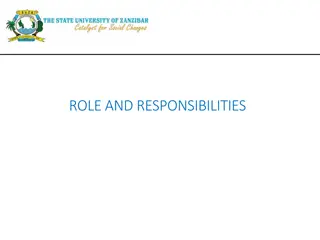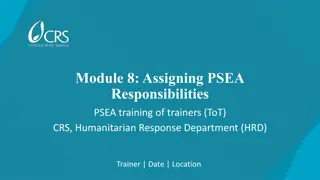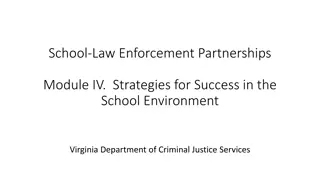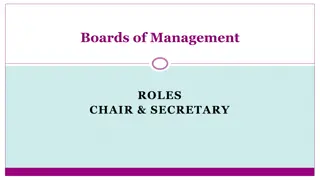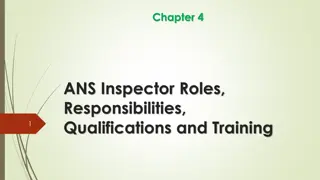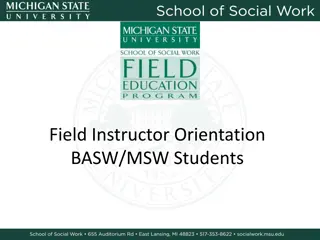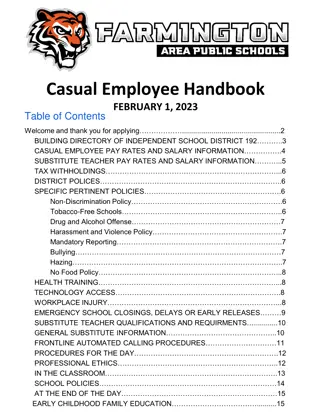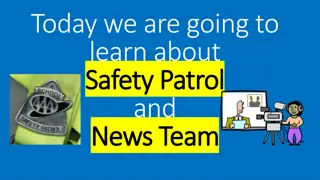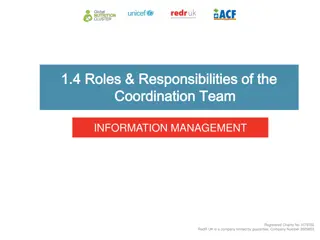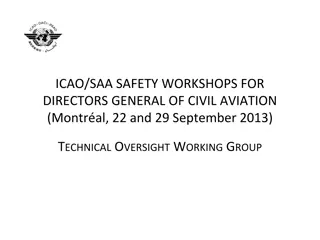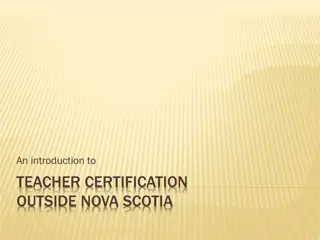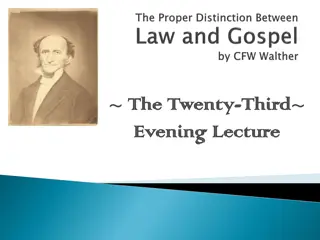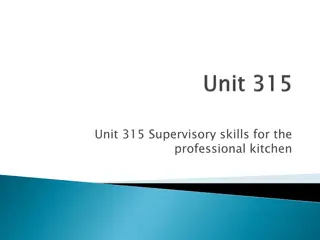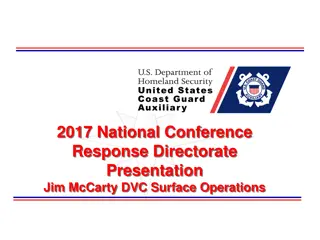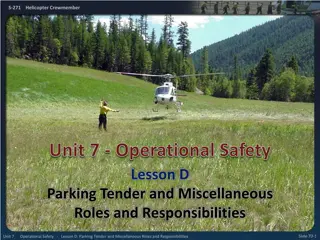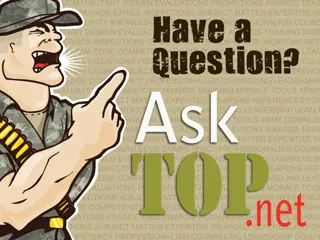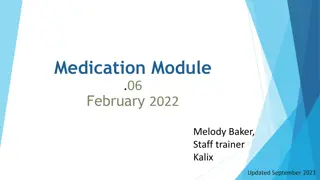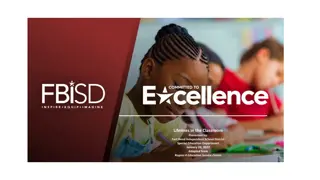Substitute Teaching Roles and Responsibilities for School Safety
Substitute teaching requires prioritizing school safety by staying attentive, maintaining a professional demeanor, following proper protocols for student care, and documenting incidents. Essential responsibilities include supervision, discipline, and communication while avoiding personal interactions, inappropriate behavior, and expressing personal beliefs. Immediate action is required in cases of child abuse or neglect.
Download Presentation

Please find below an Image/Link to download the presentation.
The content on the website is provided AS IS for your information and personal use only. It may not be sold, licensed, or shared on other websites without obtaining consent from the author. Download presentation by click this link. If you encounter any issues during the download, it is possible that the publisher has removed the file from their server.
E N D
Presentation Transcript
Friendswood ISD Substitute Training 2021-2022
What might you say is the most important job of substitute teaching? SCHOOL SAFETY- First and foremost your job is keeping students safe!
Roles and Responsibilities *Remain attentive and focused on your students at all times. Awareness of what is transpiring in your classroom is crucial. No reading books, newspapers No personal calls, keep cell phone out of sight Never leave a class unsupervised *Professional demeanor- Enthusiastic, compassionate, and positive attitude. You are responsible for a climate of respect Avoid any behavior that could be misinterpreted Dress the part, look professional
*Due to possible court documents on who may have custody of a child, children should not not be allowed to leave the building during a school day without consent from the office. THE OFFICE DISMISSES STUDENTS *Medication should only be administered by the school nurse or other appropriate personnel.
*Document incidents in the classroom which can protect you in problematic situations. If you feel that your actions might be questioned, note the date and time, the individuals involved, the choices for action considered, and the actions taken. *When sending a student to the office for discipline issues, the substitute teacher maintains the duties of supervision and care for both the individual child and the remainder of the class. Actions to consider include: utilize the phone/radio to call the office send a student with another student to the office have another teacher watch your class while you take the child
Common Sense Use verbal praise and reinforcement. Supervise students at all times. Avoid losing your temper. Do Not take children home with you and never transport them in your car. Do Not make calls to students or write notes of a personal nature to students (this includes texting). Respect students and their cultural/diverse backgrounds. Do not express political or religious beliefs in class. Use only proper humor (avoid sexual and racial jokes). Avoid criticizing others. Follow lesson plans exactly; don t adlib. Confidentiality at all times (including social media). No Distribution of outside literature. o o o o o o o o o o o o
*Child Abuse* Any school employee (including a substitute teacher) who knows or reasonably believes that a child has been neglected or physically or sexually abused, must immediately notify immediately notify campus administration. The Penn State Rule
Confidentiality *Confidential student information is protected by state law. As a substitute teacher, you will come into contact with knowledge of grades, behavior, and socio- economic conditions. **There is NEVER information from school and discuss it with others (or social media). NEVER a reason to take this
Classroom Management and Discipline What comes to mind when you hear the word DISCIPLINE?
Classroom Management and Discipline Discipline is what we do with kids rather than what we do to them. Love and Logic p.66 Research shows a student s improved behavior or cooperation can be traced and linked to the personal connection he/she developed with a special adult. Love and Logic p. 22 Children who are loved at home come to school to learn; those who aren t come to school to be loved. Nicholas A. Ferroni
Classroom Management and Discipline Engaging Students be sure you have the attention of everyone in your classroom before you start your lesson. Do not attempt to teach over the chatter of students not paying attention. Direct Instruction begin each class by telling the students exactly what will be happening. The teacher outlines what he/she and the students will be doing this period. Time limits may be set for some tasks. You may choose to state expectations for behavior prior to the activity or lesson.
MonitoringActively move around room. Check on progress and provide individualized instruction as needed. Modeling Teachers who are courteous, prompt, enthusiastic, in control, patient and organized provide examples for students through their behavior. Setting an example is not the main means of influencing others; it is the only means. Albert Einstein
I need Help!! Talk with grade level or content area teachers. Ask your neighbor next door or across the hall. Secretaries are great resources- get their phone extension. Principals/APs are there to help. Never be afraid to ask a question! Never be afraid to ask a question!
Daily Routine Arrive on time (early ask what time the campus opens). Most campus doors open 30 min prior to day. Dress professionally appearance makes a difference (tattoos covered, natural hair color, no loop ring in the nose etc ). Jeans are allowed, but they need to be nice (no holes or frayed). Spirit day is on Fridays so Mustang or Friendswood spirit t-shirts are acceptable. Substitutes are not allowed to bring their personal children to the assigned classroom for the day. Follow the teacher s lesson plan and schedule as given to you. Do not adlib!
Prior to Entering the Classroom Prior to Entering the Classroom Check-in at the campus office; WEAR AN IDENTIFYING BADGE/LANYARD! If you lose your badge, please notify Hope Coburn for replacement immediately. You can not be on campus without a badge. Ask about special procedures and schedules. Extra duties associated with the assignment lunch, after school, etc. School-wide events planned for the day- assemblies, field trips, pep rally, etc. Attendance procedures Student medical concerns**** Get office extension and secretaries name if you need to call from the room. Ask for the campus folder when you check in if you are unfamiliar with campus.
In the Classroom Prior to Students In the Classroom Prior to Students Arrival Arrival Review any posted expectations and rules Review evacuation map & emergency procedures Special needs in classroom or allergies Read through the lesson plans & schedule Locate books and materials which will be used Familiarize yourself with AV equip being used Study the seating charts Familiarize yourself with phone and office # Greet students Greet students with confidence as they enter the classroom
At the end of each class period or day At the end of each class period or day Account for all classroom materials Have students straighten and clean the area around their desk. Remind students of homework. Write a brief report of your day and leave it for the classroom teacher. Neatly organize the papers turned in by the students. Turn off lights and equipment (FISD saves $$ through energy conservation). Make sure the room appears organized before you leave. Leave feedback for the teacher on frontline, especially if there is anything important to note. Remember, the teacher also leaves feedback on you. You may contact Hope Coburn at hcoburn@fisdk12.net with any questions or concerns.





